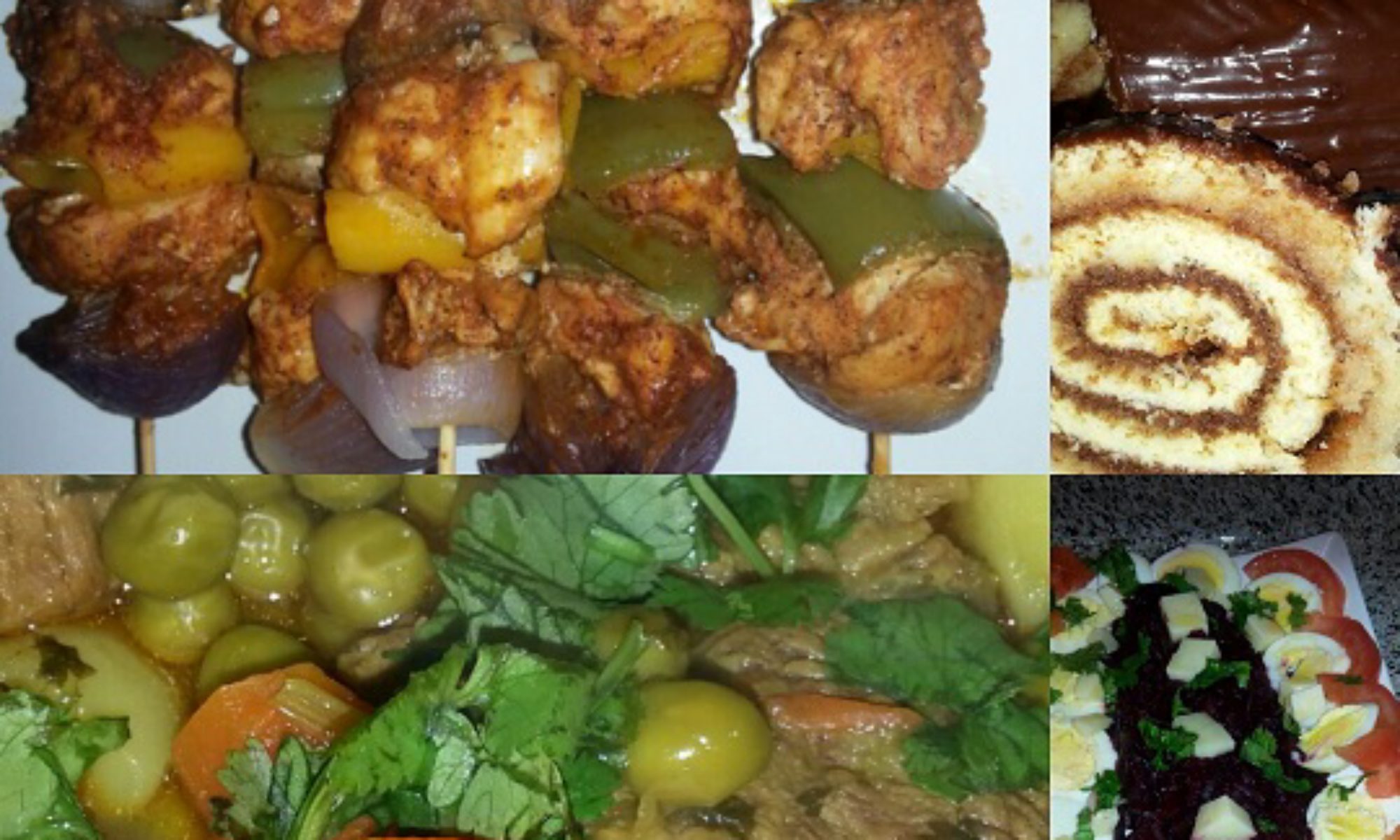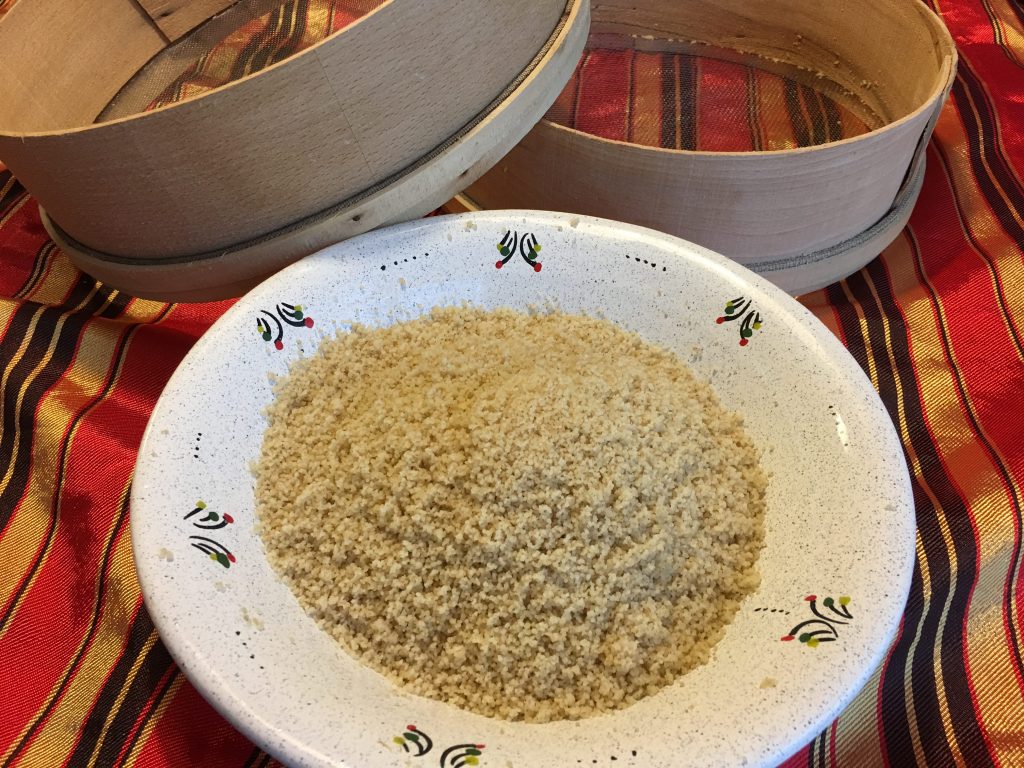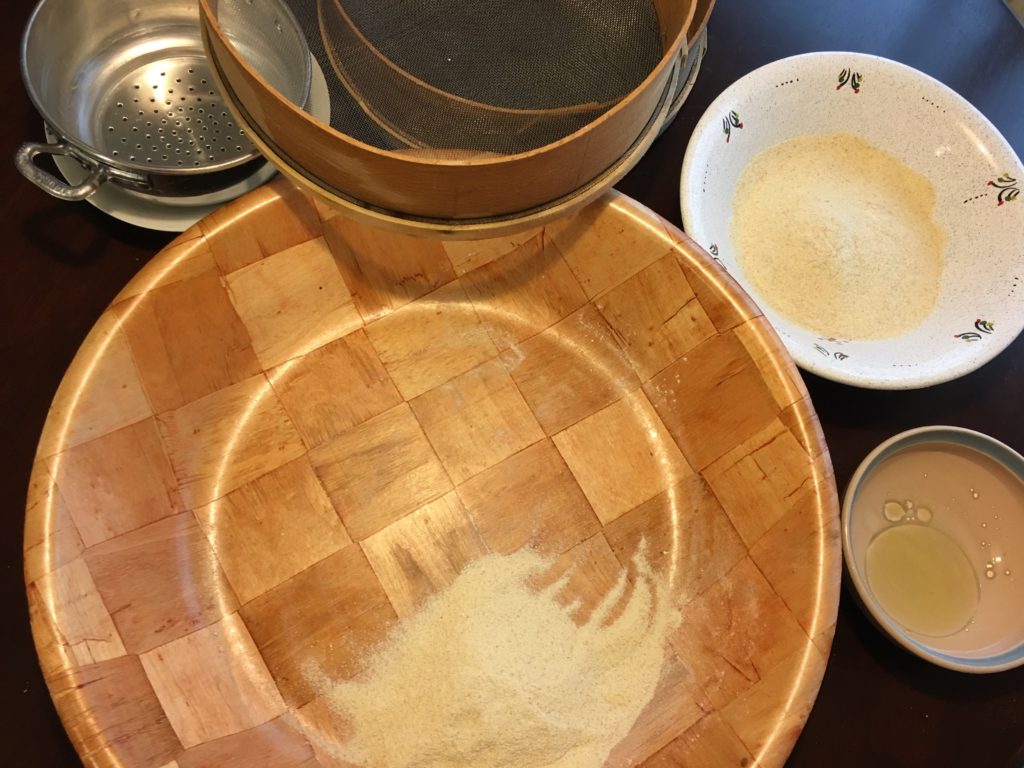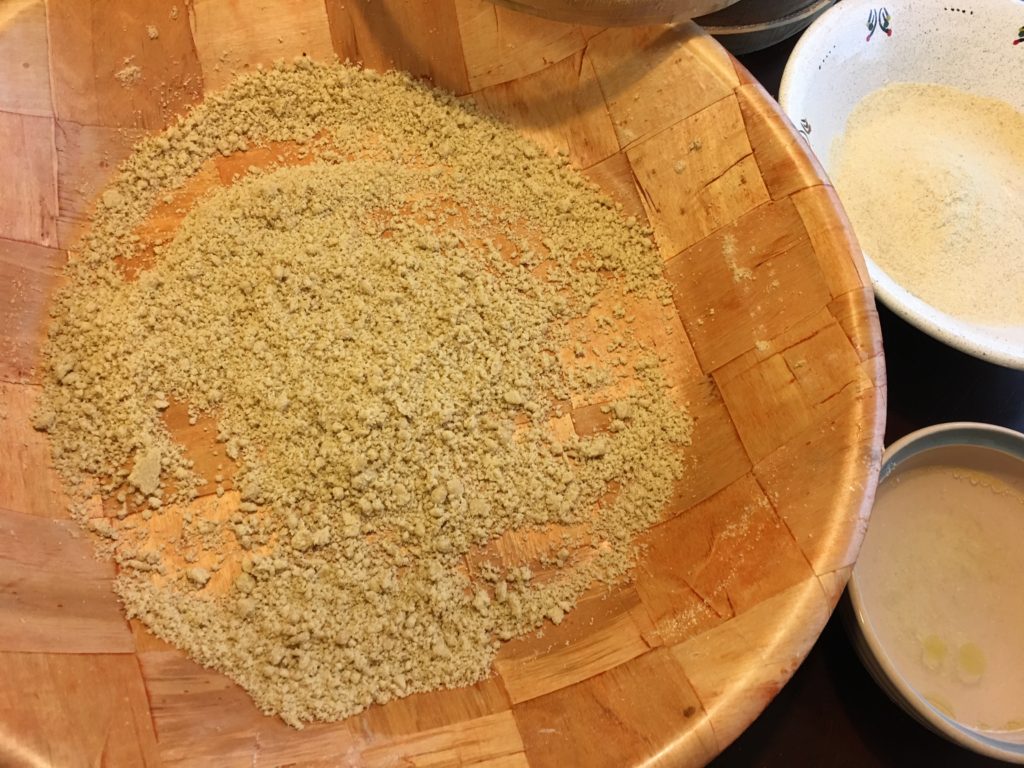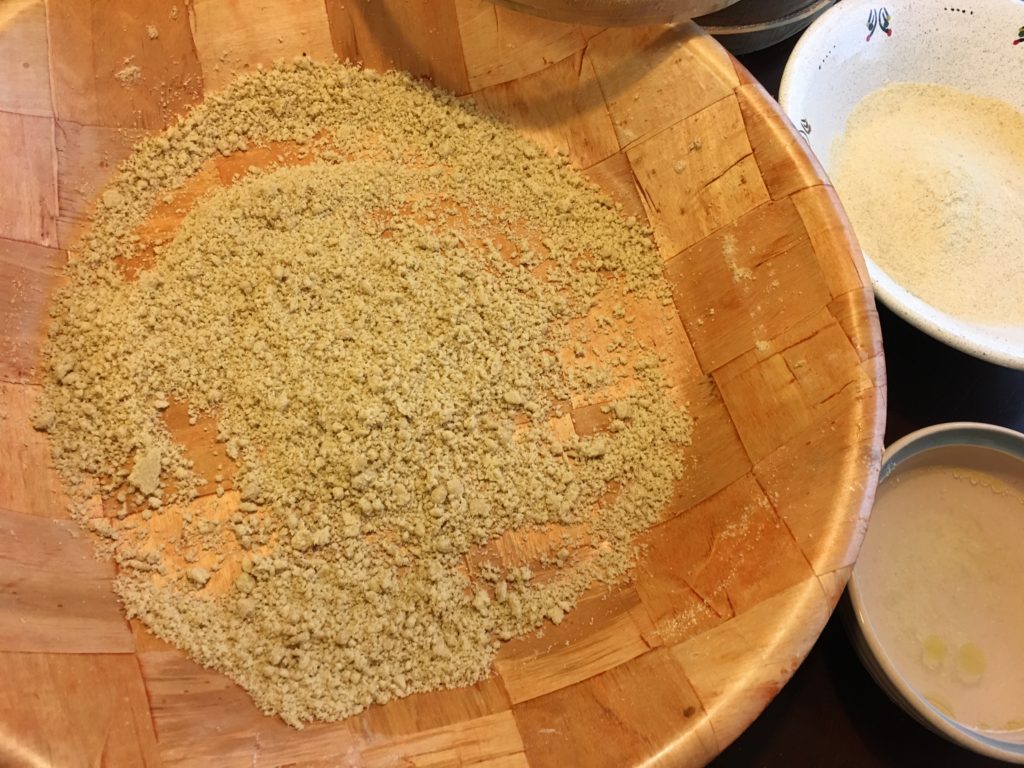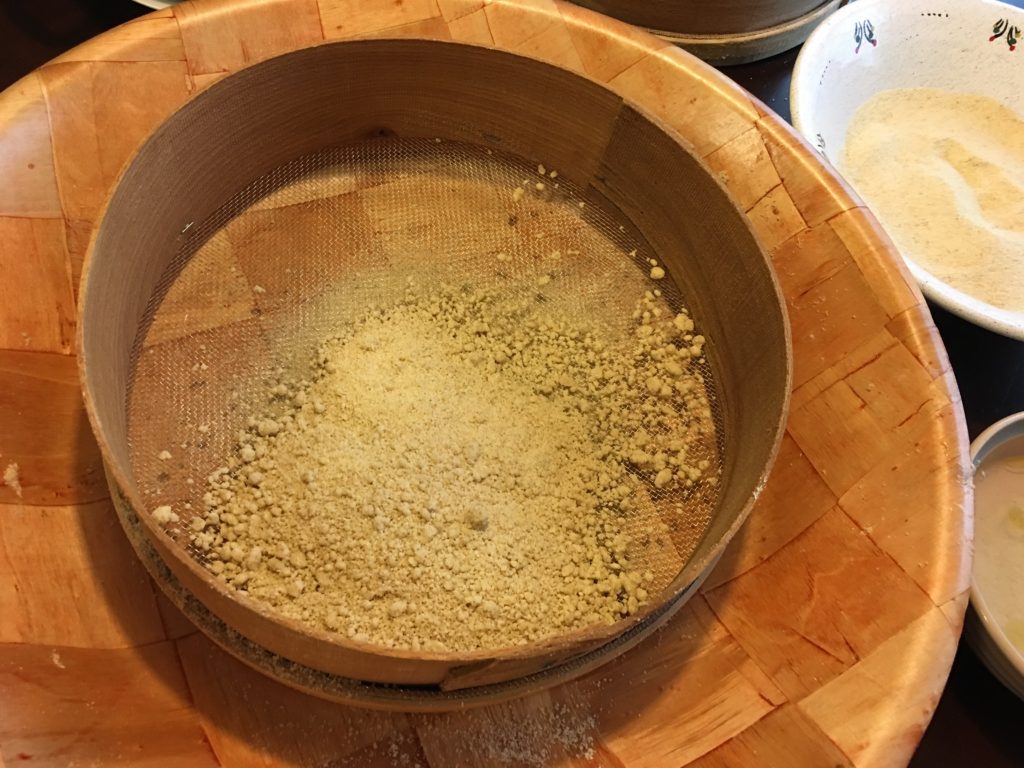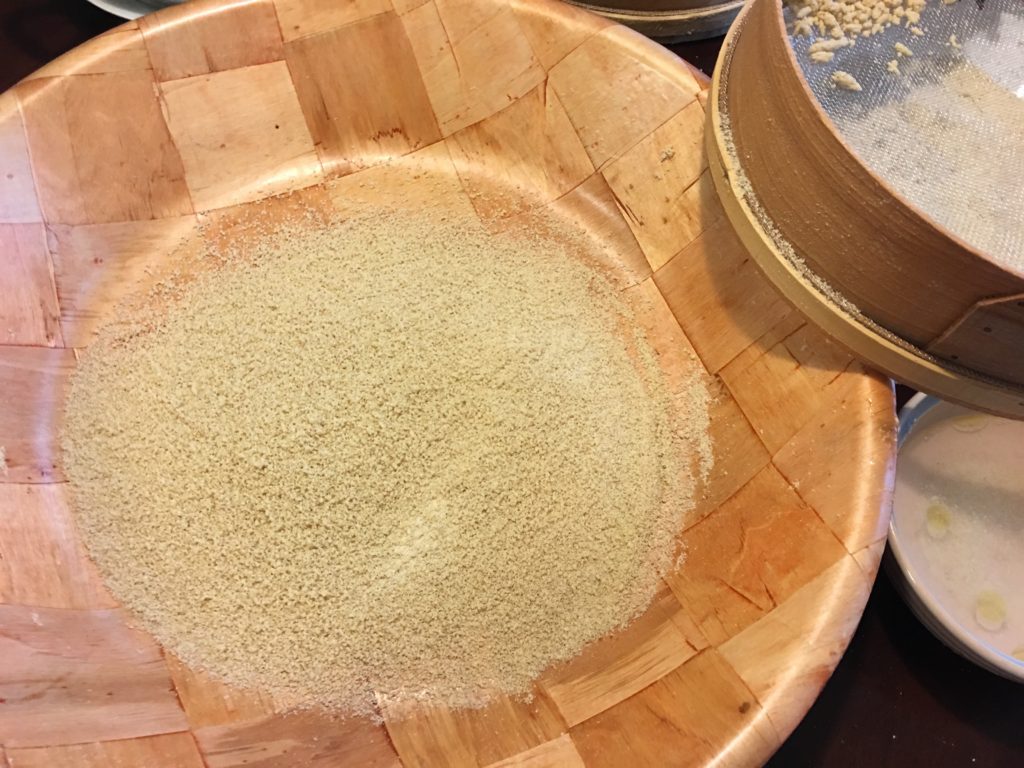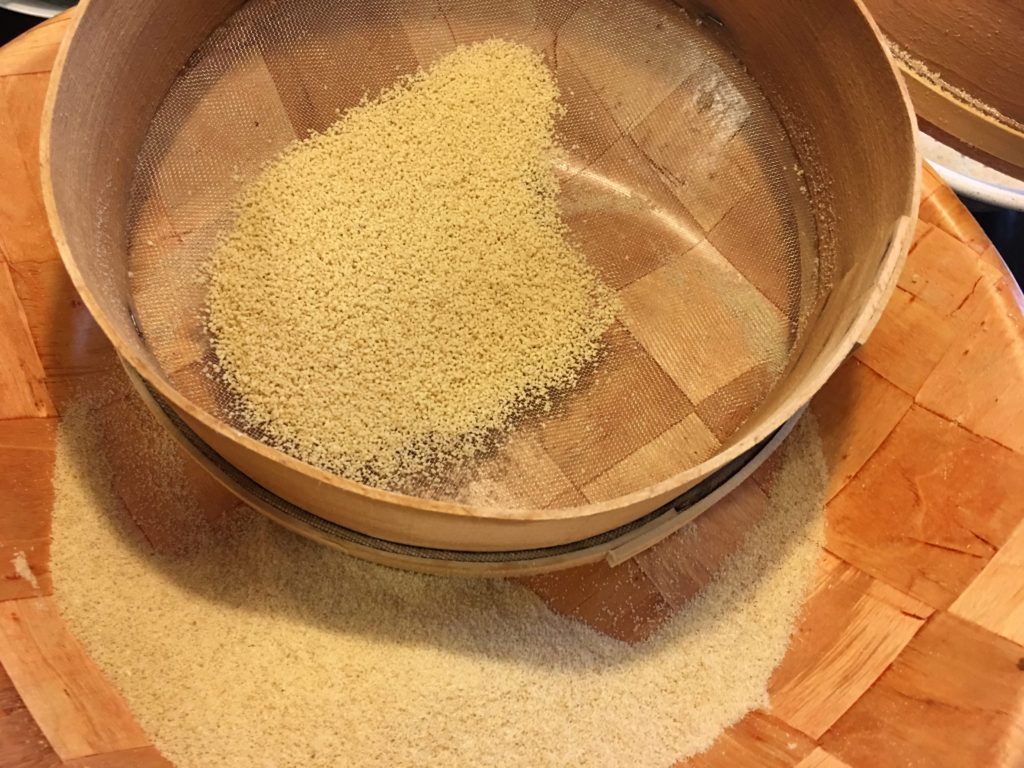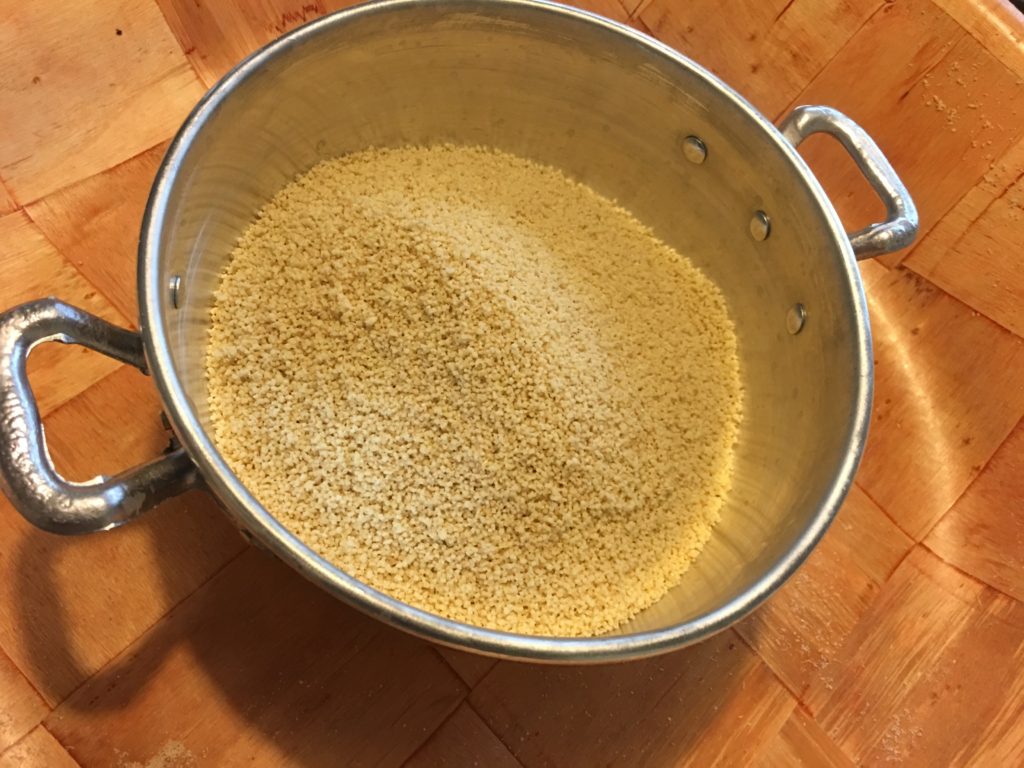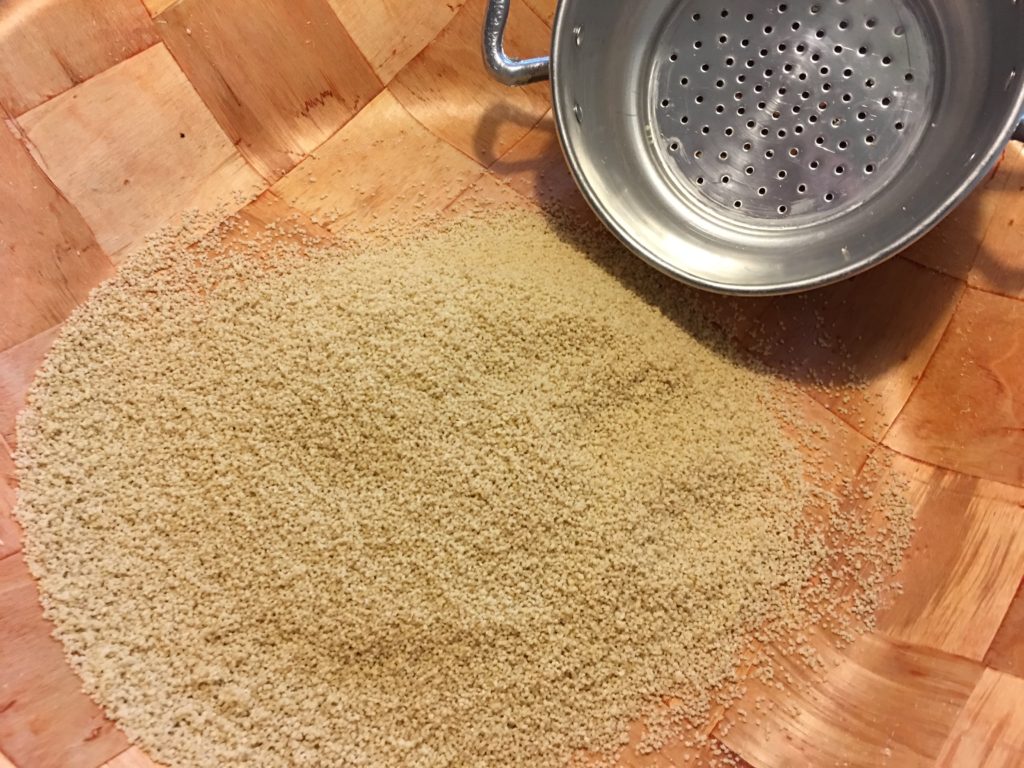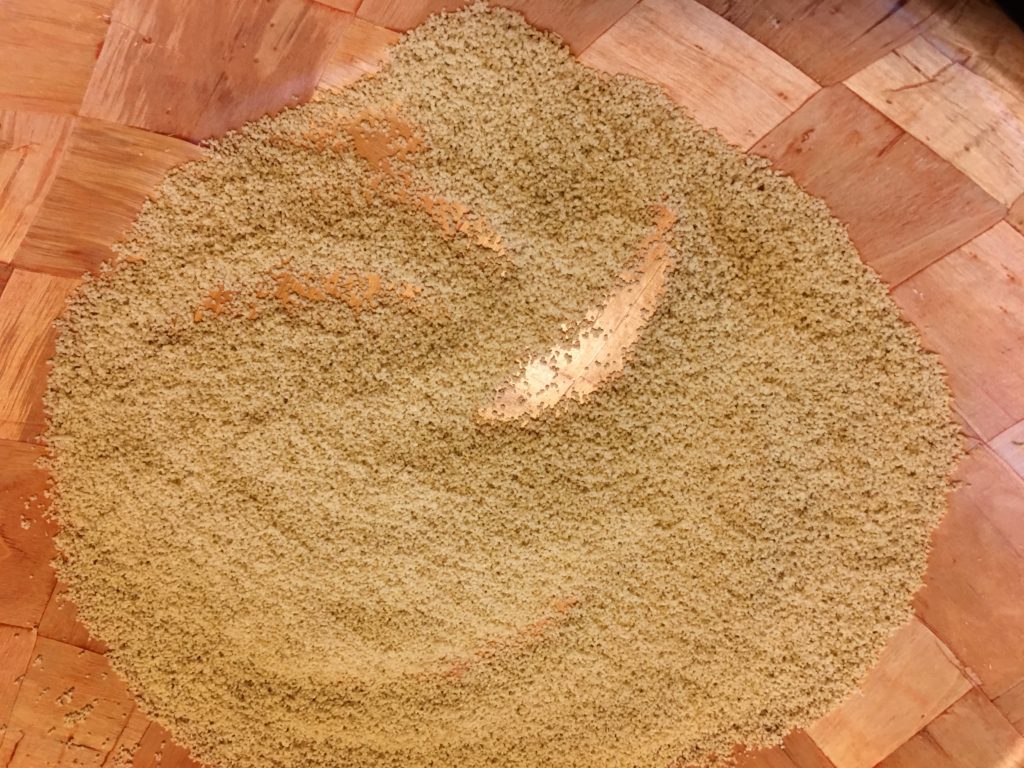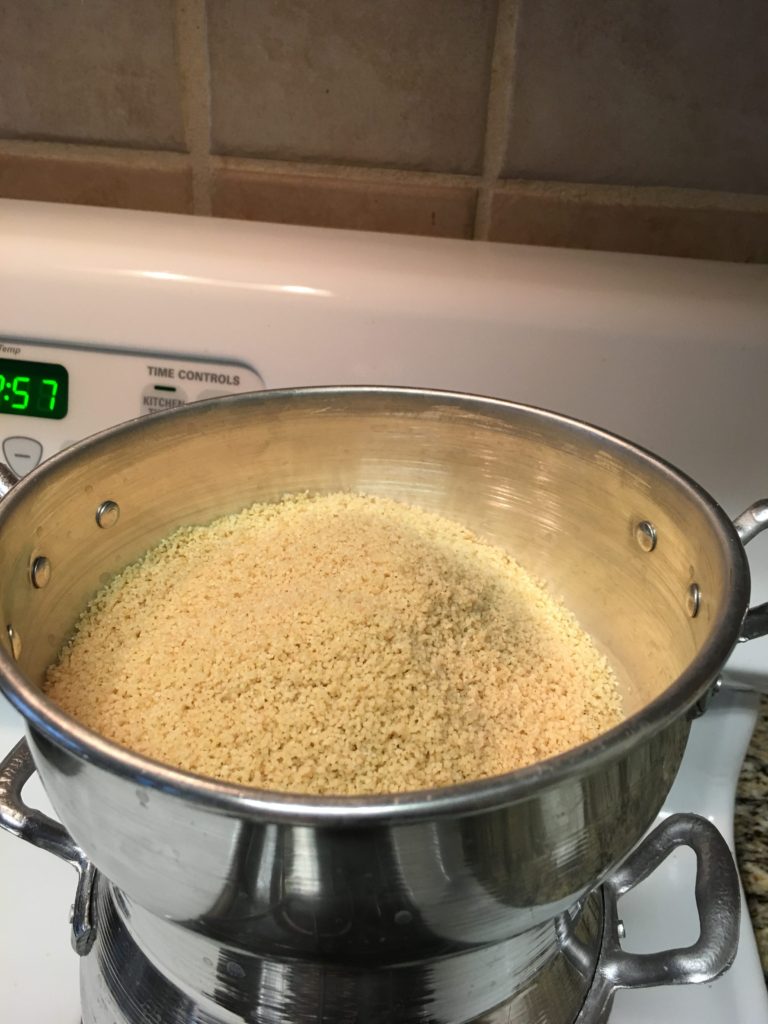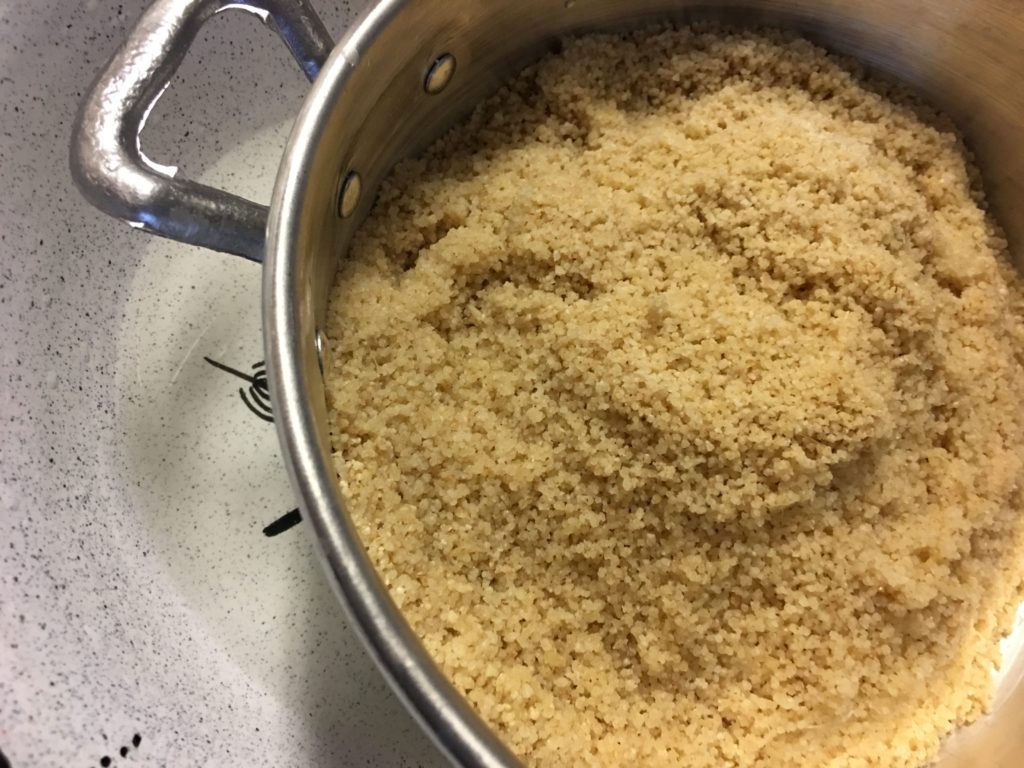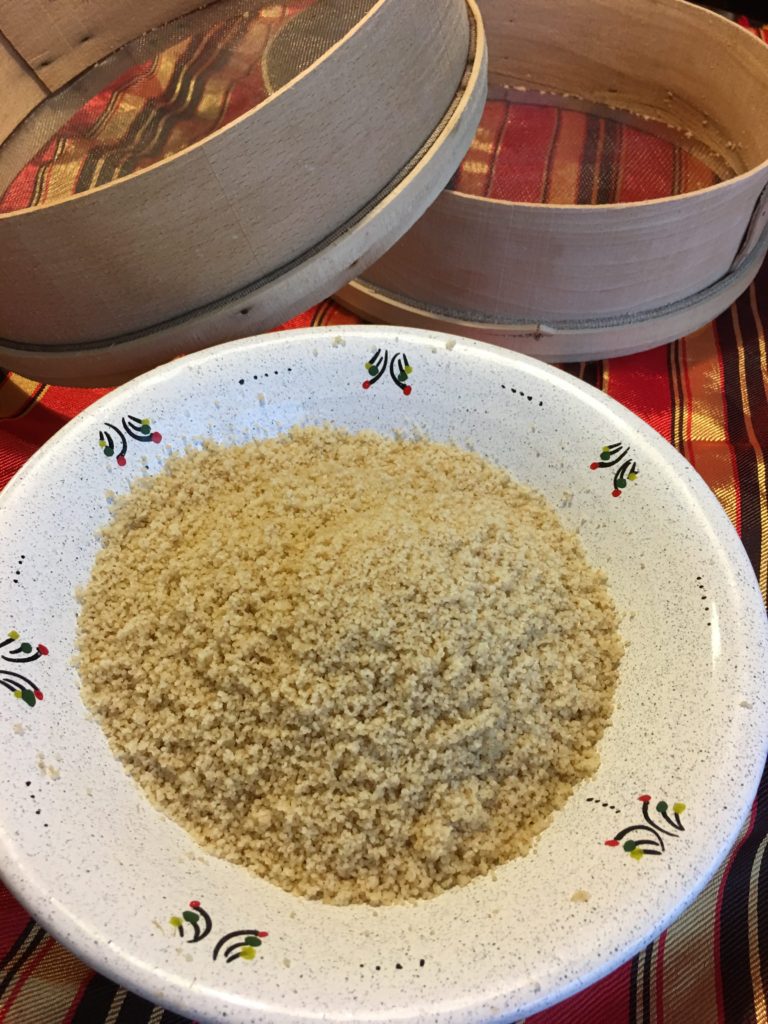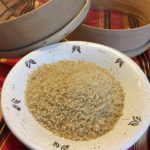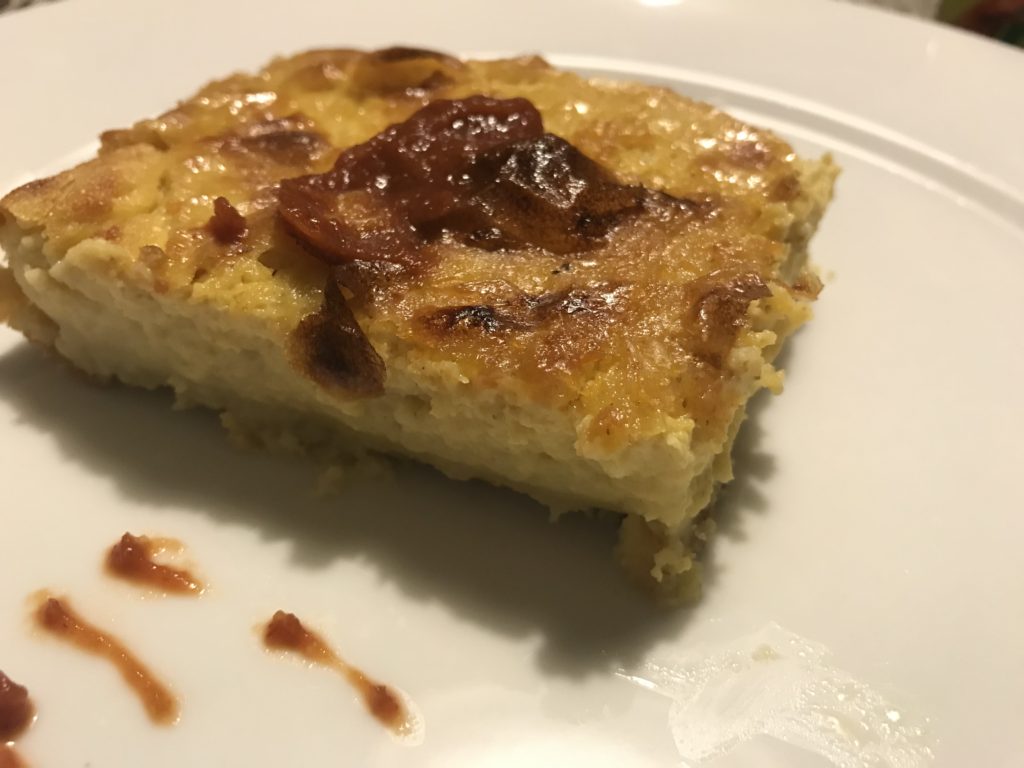
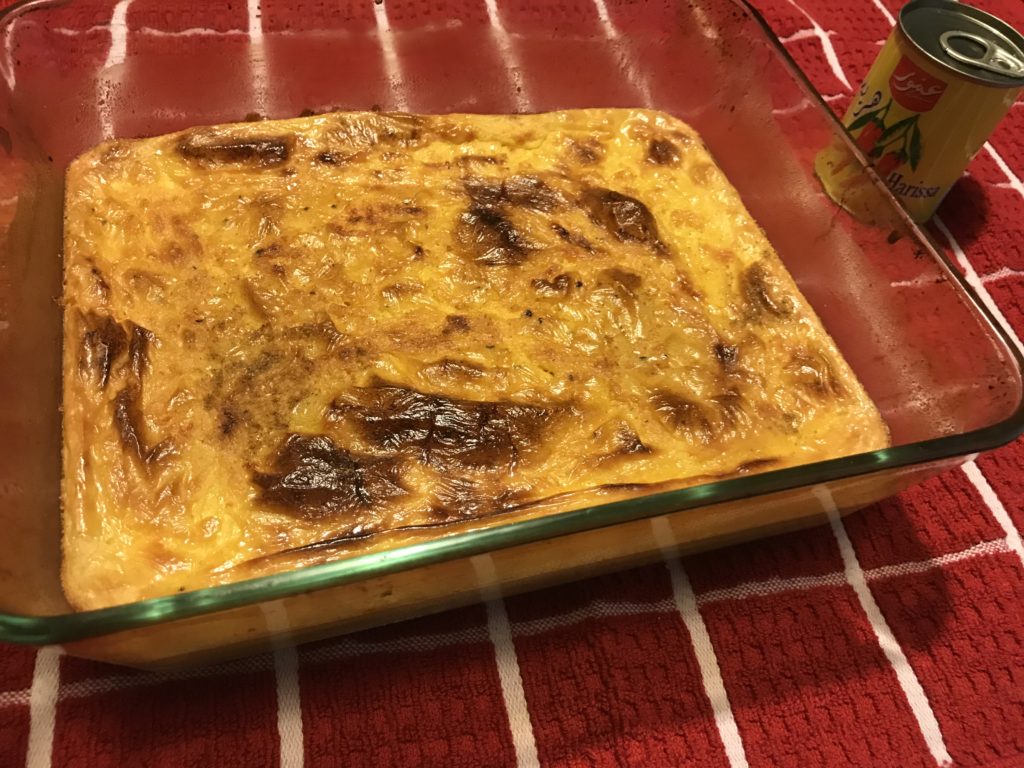
Algerian chickpea pie called Garantita has other names such as Karantika, Calentica or Calentita. It may have other names, depends on the region.
The origin of this dish is from Spain, when the Spanish empire invaded the west of Algeria (Oran) in the early 16th century.
Garantita has a flan texture and it is usually sold by street vendors over a good French baguette with cumin and Harissa, that Maghrebi hot chili pepper paste. This is a very cheap dish in Algeria but yet very filling and yummy.
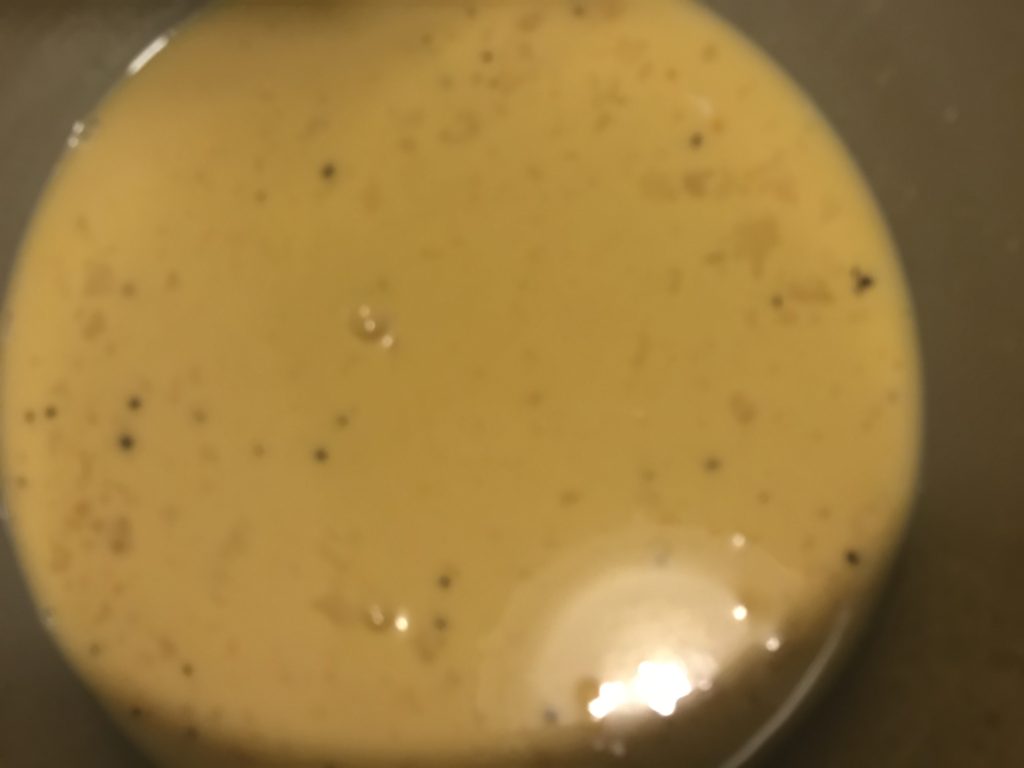
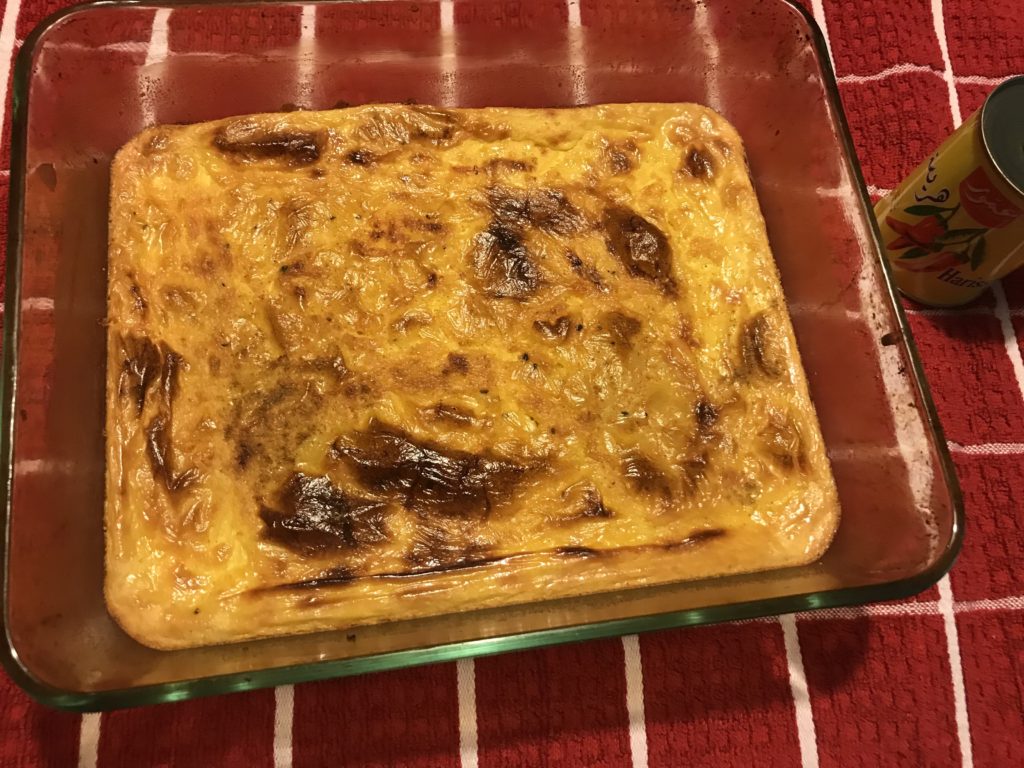
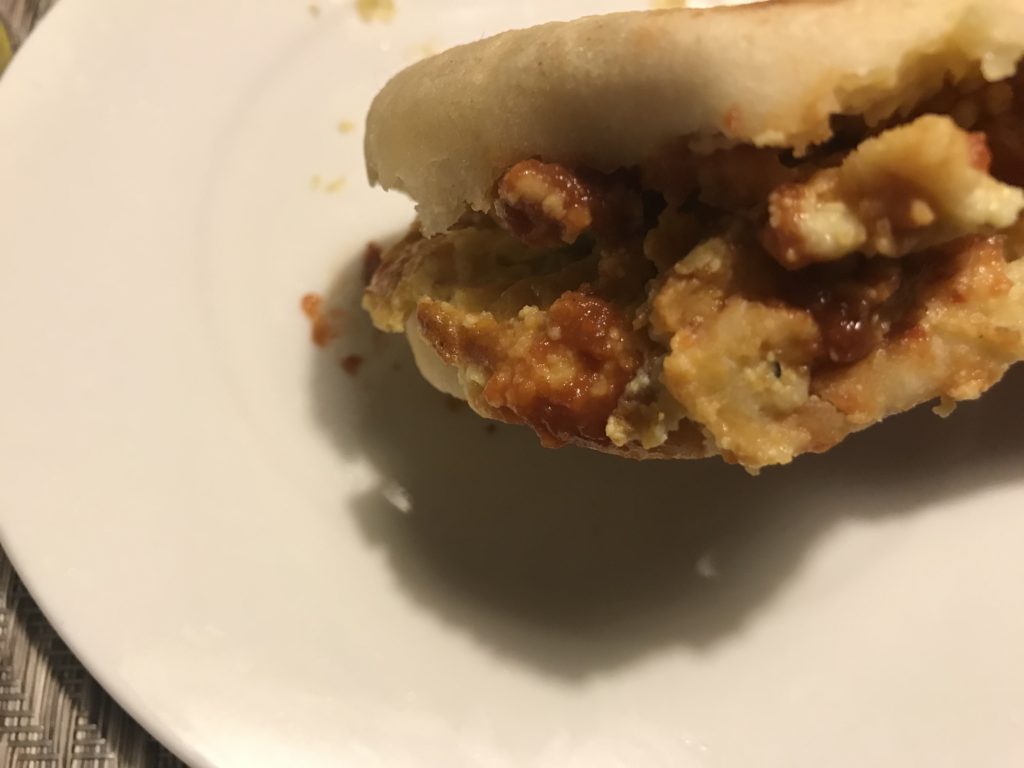
Served with the Moroccan bread ( Batbout), in this picture.
Sprinkle with cumin to your liking, drizzle with olive oil and serve with a French baguette or any other type of bread and Harissa or your favorite hot sauce.
Ingredients
- 2 cups chickpea flour
- 2 eggs
- 1/3 cup vegetable oil
- 4 cups water
- 2 tsp salt
- ¼ tsp black pepper
- 1 tbsp baking powder
- 1 tbsp cumin powder and more for sprinkling
- Harissa for serving or your favorite hot sauce
Instructions
-
In a large bowl, whisk the chickpea flour,baking powder, eggs, oil, salt, pepper, cumin and water. Whisk for about 5 minutes or until smooth. The batter is fluid just like the crepes batter.
-
Pour in a slightly buttered pan, round or rectangular. I have used a 9×7 inch Pyrex pan in this recipe.
-
Bake in a 400 °F preheated oven for about 30 minutes. I placed the pie under the broiler for the last 10 minutes until golden brown.
-
Sprinkle with cumin to your liking, drizzle with olive oil and serve hot with a French baguette or any other type of bread and Harissa or your favorite hot sauce.
